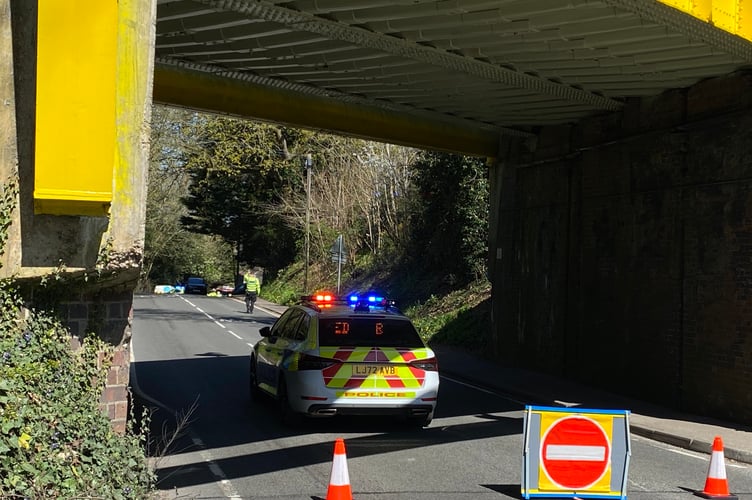On March 16, Prime Minister Narendra Modi joined US-based podcaster Lex Fridman for a podcast where he emphasised the transformative power of sports, stating that “Sports have the power to energise the world.” He further mentioned an inspiring story of a small tribal village named Bicharpur which have earned the name of “Mini Brazil” for giving more than 80 national-level players to the country. This was the second time when PM talked about this village, first was the 103rd episode of “Man Ki Baat” where he shared his experience of interacting with football players of Bicharpur.
The village falls in the Shahdol district of Madhya Pradesh.On June 27, the PM met over 80 football players of Bicharpur during his visit to Shahdol. At that time, PM praised the village’s transformation and encouraged the young players to give their best.

It was the impact of the dramatic positive change of the village that even after more than a year PM recalled this meeting in the podcast.Village Transformed by FootballWhen we think of renowned sports figures, we often hear tales of how athletics reshaped their personal journeys. Yet, Bicharpur offers a remarkable case where football has revolutionised the destiny of an entire village.
Nestled in Shahdol, Bicharpur village vividly illustrates this transformation.Just a few decades back, this predominantly tribal community was notorious for its illicit liquor trade and widespread addiction, particularly among the youth. Now, it has emerged as a thriving center for football talent, demonstrating the power of sports to elevate entire communities, even liberating them from the grip of addictions like alcohol and beyond.
While tribal groups are frequently linked to liquor and other vices, the residents of Bicharpur have redefined their identity through football. At the heart of the village lies a ground, surrounded by families whose lives now orbit around the sport.Bicharpur at a glanceOver the years the village has produced over 45 national footballers.
The village is home to Gond and Baiga tribe. Bicharpur is a small village located in Sohagpur Tehsil of Shahdol district, Madhya Pradesh with a total of 244 families residing. The village has population of 900 of which 444 are males while 456 are females as per Population Census 2011.
In Bicharpur village, most of the village population is from Schedule Tribe (ST). Schedule Tribe (ST) constitutes 74.78 per cent while Schedule Caste (SC) were 3.
56 per cent of total population in Bicharpur village. The primary source of income for many families was the production of liquor from the locally available “mahua” fruit. However, football has dramatically changed the socio-economic landscape of the village.
“Vichar” which transformed Bicharpur into “Mini Brazil”Raees Ahmed, a former national football player and sports teacher at a higher secondary school in Shahdol has transformed the fate of the “Bicharpur” with his initiative. It all began in 2001 when Raees first noticed a group of village children playing football for fun. He saw their natural athleticism and energy but realised they lacked proper training and knowledge about the sport.
Determined to make a difference, he decided to train them and channel their potential toward a brighter future.Thereafter, every evening after office hours Raees would set out for the village on his bicycle. He started training the children of age group 8–12 years.
The major challenge for the coach was lack of basic resources like formal set up of ground and tribal children lacked basic amenities like shoes and jerseys. In the initial stage he somehow managed all this with personal income.Seeing a good response from the children, the coach also encouraged them to quit the mahua work if they wanted to seriously dedicate themselves to building a career in sports.
“These children helped their families quit nasha khori (alcoholism) and switch to other works like labour jobs,” he recalled in a media report. Raees motivated them to convince their families to give up alcohol production and addiction to shift to other forms of labour,The fruitful results of all these efforts started coming in 2003, when these children started playing in the ‘under 14’ category at the state and national level. From 2004, girls also started participating in the sport.
So far, the coach has trained at least 1,500 children, and of these, 45 have made it to the state and national level competitions.There goes a saying in village – A child is born with a football attached to his legs. Football was already a passion among the children and youth of Bicharpur, but they lacked the necessary infrastructure and resources to develop their skills.
Many aspiring players were forced to take up labour jobs to support their families. However, as the village gained recognition for its football talent, both the local administration and the community stepped in to support these players.To help them sustain their careers, football players were provided job opportunities in industries.
Additionally, various organisations, including the Sports and Youth Welfare Department, the School Education Department, Amarkantak Thermal Power Station Chachai, Indian Railways, corporate entities, and public supporters, contributed to their development. Essential sports equipment such as footballs, caps, T-shirts, sports shoes, and tracksuits were supplied, ensuring that the players had the necessary facilities to train and compete effectively.Football Kranti in Shahdol DivisionLater, Shahdol divisional commissioner Rajeev Sharma spotted the talent in Bicharpur and thought of spreading football in the Shahdol district.
The sport has become popular in the Shahdol district. To redirect young people’s attention from phone and drug addiction to sports, Sharma started the football revolution with assistance from the school education department, the sports and youth welfare department, and several other departments. They would be able to live a healthier lifestyle and possibly earn money as a result.
The success of Bicharpur inspired a larger movement, leading to the launch of the ‘Football Kranti’ initiative. This initiative, spearheaded by Shahdol Divisional Commissioner Rajeev Sharma, was designed to replicate Bicharpur’s success across three districts—Shahdol, Anuppur, and Umaria. The three-tier Football Kranti model began with the establishment of in 1,000 football clubs in gram panchayats, which contain a substantial tribal population, mainly the Gond tribe and the vulnerable and backward Baiga tribe.
Each of the football clubs in 1000-gram panchayats were provided with the bare minimum kits and football grounds too were created in many cases through the MNREGA route.These clubs offered a chance for young players, between 4 and 25 years of age, to be given formal training. As thousands of players became part of these village clubs, Sharma and ADG Shahdol Range DC Sagar envisioned a second level—incorporating football training into schools.
The objective of this phase is to nourish the raw talent under the guidance of qualified coaches. When the Reliance Foundation joined the effort as part of its Youth Sports project, it was a huge boost. Through the All India Football Federation (AIFF), the initiative invited a top coach from Pune to organise the training for the local players.
As a result, local unemployed football players who competed at the national level become certified E-license coaches, making them officially qualified to instruct young players.The national players of Bicharpur are now certified football coaches, and they are training new talent in Shahdol division which was instrumental in this development. In addition to offering jobs, the initiative gave aspiring football players a planned career path.
Bicharpur, known as Shahdol district’s “football foundry,” is now expected to serve as the main focus of the Football Kranti campaign. In the village, the Sports Authority of India (SAI) is attempting to set up a Mini Soccer Training Academy. At the planned SAI Academy in Bicharpur, the top 20 boys and 20 girls from the first two tiers—village football clubs and school-based training—will get specialised instruction.
The national sports organisation will also provide them with a Rs 1,000 monthly stipend, guaranteeing that they would have the resources necessary to pursue careers in professional football.The entire region is now gradually becoming a part of this football revolution. Shahdol and the neighbouring districts have seen the formation of over 1200 football clubs.
Many players who are now competing at the national level have come from this area. Numerous well-known former football players and coaches are currently training the local children. It is a matter of pride that a small tribal village that was notorious for drug addiction and illegal alcohol use emerged as the nation’s football nursery.
.
Madhya Pradesh’s ‘Mini Brazil’ gets a shout out from PM Modi for producing 80 National football players

On March 16, Prime Minister Narendra Modi joined US-based podcaster Lex Fridman for a podcast where he emphasised the transformative power of sports, stating that “Sports have the power to energise the world.” He further mentioned an inspiring story of a small tribal village named Bicharpur which have earned the name of “Mini Brazil” for giving more than 80 national-level players to the country. This was the second time when PM talked about this village, first was the 103rd episode of “Man Ki Baat” where he shared his experience of interacting with football players of Bicharpur. The village falls in the Shahdol district of Madhya Pradesh. On June 27, the PM met over 80 football players of Bicharpur during his visit to Shahdol. At that time, PM praised the village’s transformation and encouraged the young players to give their best. It was the impact of the dramatic positive change of the village that even after more than a year PM recalled this meeting in the podcast. Village Transformed by Football When we think of renowned sports figures, we often hear tales of how athletics reshaped their personal journeys. Yet, Bicharpur offers a remarkable case where football has revolutionised the destiny of an entire village. Nestled in Shahdol, Bicharpur village vividly illustrates this transformation. Just a few decades back, this predominantly tribal community was notorious for its illicit liquor trade and widespread addiction, particularly among the youth. Now, it has emerged as a thriving center for football talent, demonstrating the power of sports to elevate entire communities, even liberating them from the grip of addictions like alcohol and beyond. While tribal groups are frequently linked to liquor and other vices, the residents of Bicharpur have redefined their identity through football. At the heart of the village lies a ground, surrounded by families whose lives now orbit around the sport. Bicharpur at a glance Over the years the village has produced over 45 national footballers. The village is home to Gond and Baiga tribe. Bicharpur is a small village located in Sohagpur Tehsil of Shahdol district, Madhya Pradesh with a total of 244 families residing. The village has population of 900 of which 444 are males while 456 are females as per Population Census 2011.In Bicharpur village, most of the village population is from Schedule Tribe (ST). Schedule Tribe (ST) constitutes 74.78 per cent while Schedule Caste (SC) were 3.56 per cent of total population in Bicharpur village. The primary source of income for many families was the production of liquor from the locally available “mahua” fruit. However, football has dramatically changed the socio-economic landscape of the village. “Vichar” which transformed Bicharpur into “Mini Brazil” Raees Ahmed, a former national football player and sports teacher at a higher secondary school in Shahdol has transformed the fate of the “Bicharpur” with his initiative. It all began in 2001 when Raees first noticed a group of village children playing football for fun. He saw their natural athleticism and energy but realised they lacked proper training and knowledge about the sport. Determined to make a difference, he decided to train them and channel their potential toward a brighter future. Thereafter, every evening after office hours Raees would set out for the village on his bicycle. He started training the children of age group 8–12 years. The major challenge for the coach was lack of basic resources like formal set up of ground and tribal children lacked basic amenities like shoes and jerseys. In the initial stage he somehow managed all this with personal income. Seeing a good response from the children, the coach also encouraged them to quit the mahua work if they wanted to seriously dedicate themselves to building a career in sports. “These children helped their families quit nasha khori (alcoholism) and switch to other works like labour jobs,” he recalled in a media report. Raees motivated them to convince their families to give up alcohol production and addiction to shift to other forms of labour, The fruitful results of all these efforts started coming in 2003, when these children started playing in the ‘under 14’ category at the state and national level. From 2004, girls also started participating in the sport. So far, the coach has trained at least 1,500 children, and of these, 45 have made it to the state and national level competitions. There goes a saying in village – A child is born with a football attached to his legs. Football was already a passion among the children and youth of Bicharpur, but they lacked the necessary infrastructure and resources to develop their skills. Many aspiring players were forced to take up labour jobs to support their families. However, as the village gained recognition for its football talent, both the local administration and the community stepped in to support these players. To help them sustain their careers, football players were provided job opportunities in industries. Additionally, various organisations, including the Sports and Youth Welfare Department, the School Education Department, Amarkantak Thermal Power Station Chachai, Indian Railways, corporate entities, and public supporters, contributed to their development. Essential sports equipment such as footballs, caps, T-shirts, sports shoes, and tracksuits were supplied, ensuring that the players had the necessary facilities to train and compete effectively. Football Kranti in Shahdol Division Later, Shahdol divisional commissioner Rajeev Sharma spotted the talent in Bicharpur and thought of spreading football in the Shahdol district. The sport has become popular in the Shahdol district. To redirect young people’s attention from phone and drug addiction to sports, Sharma started the football revolution with assistance from the school education department, the sports and youth welfare department, and several other departments. They would be able to live a healthier lifestyle and possibly earn money as a result. The success of Bicharpur inspired a larger movement, leading to the launch of the ‘Football Kranti’ initiative. This initiative, spearheaded by Shahdol Divisional Commissioner Rajeev Sharma, was designed to replicate Bicharpur’s success across three districts—Shahdol, Anuppur, and Umaria. The three-tier Football Kranti model began with [...]











